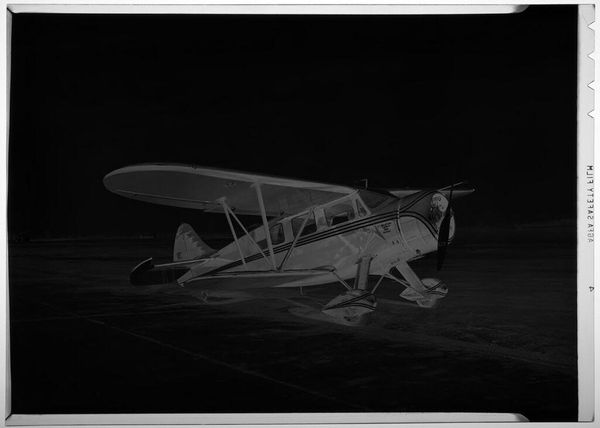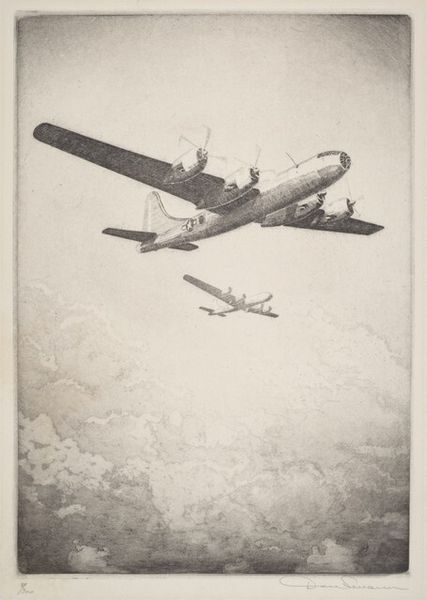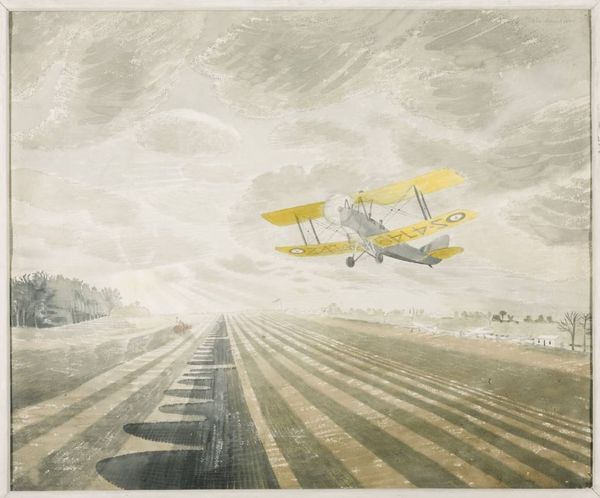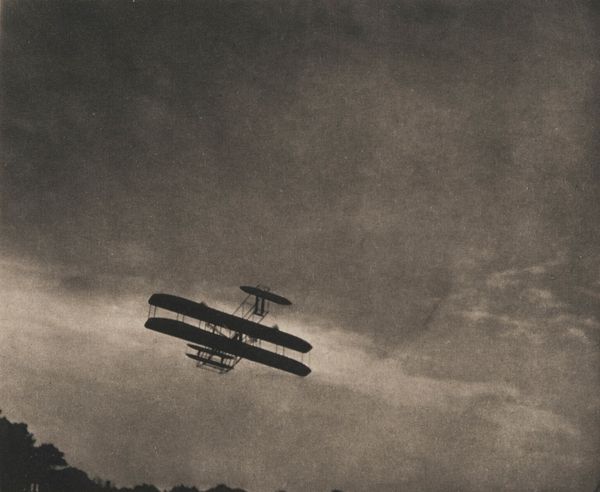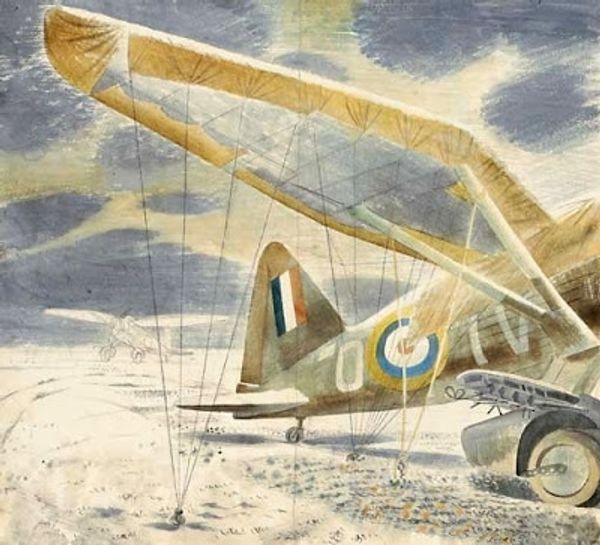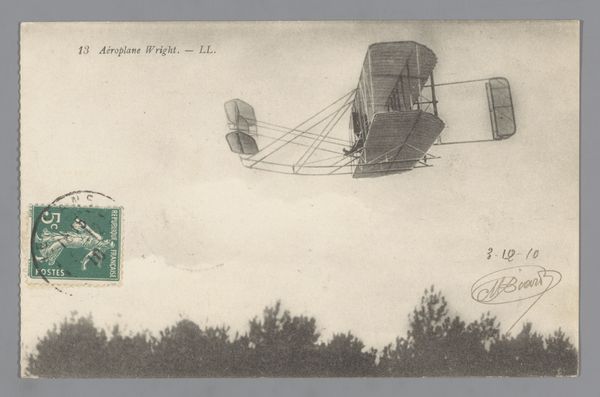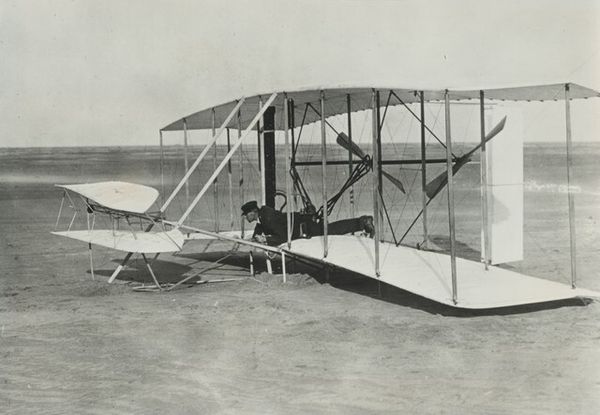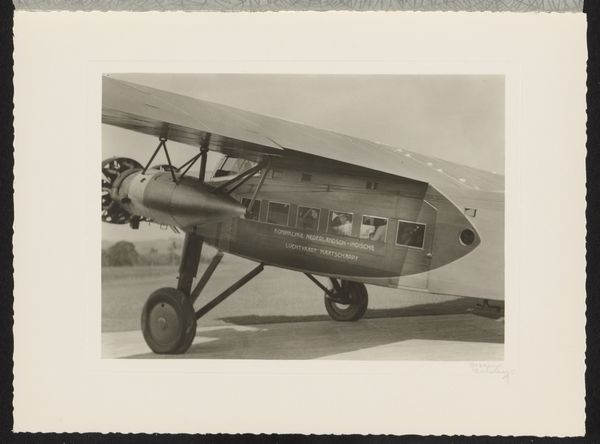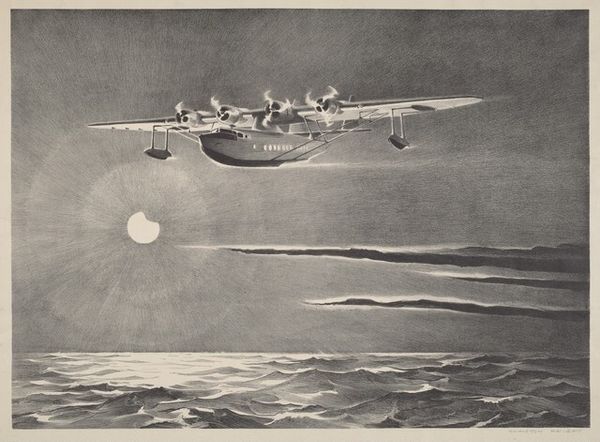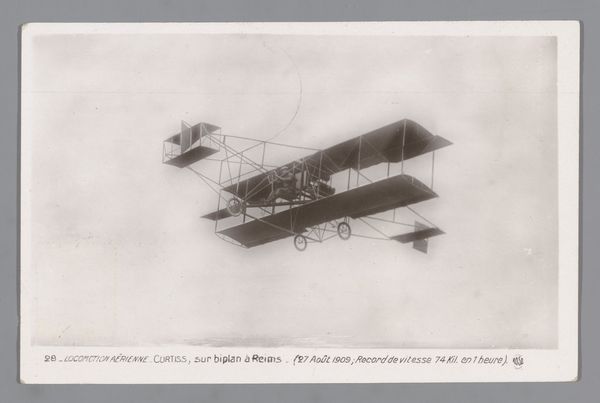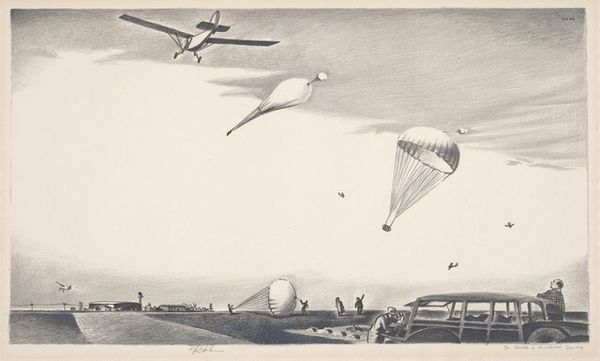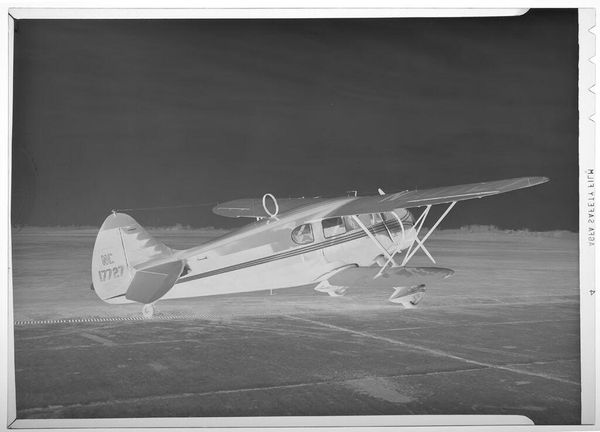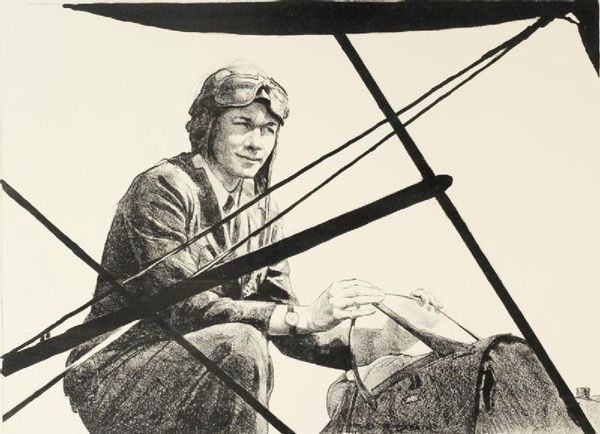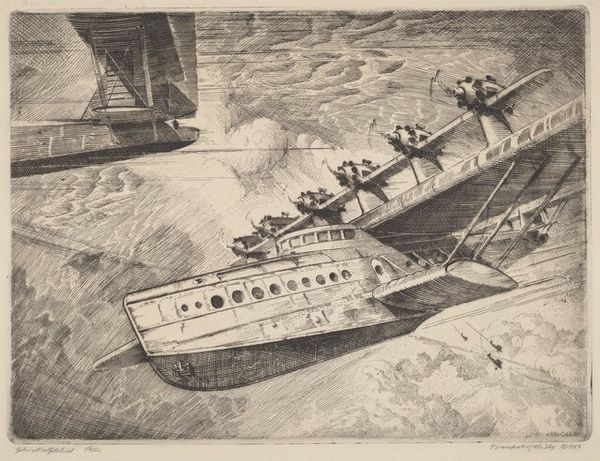
drawing, print, graphite
#
drawing
# print
#
pencil drawing
#
graphite
#
cityscape
#
modernism
Dimensions: Image: 225 x 303 mm Sheet: 319 x 389 mm
Copyright: National Gallery of Art: CC0 1.0
Wayne Davis made this print of a Curtiss Falcon D-12, sometime in the mid-twentieth century, using etching. This process involves drawing into a wax ground on a metal plate, then immersing the plate in acid. The acid bites away the exposed metal, creating incised lines that hold ink. The character of the etching process greatly influences the appearance of the print. The etched lines are delicate, creating a sense of light and airiness around the subject. Note the intricate details of the aircraft: the network of supporting wires, the textural elements, and the subtle tonal variations, achieved through varying the density and depth of the etched lines. Davis's choice of etching links him to a long tradition of printmaking, and the democratized production of images. Yet, it also reflects the social context of aviation's early days. The Curtiss Falcon D-12 evokes a sense of technological advancement and industrial prowess. The artist celebrates the ingenuity of engineering and design, and the skilled labor involved in bringing such machines to life. By focusing on materials, making, and context, we can understand the full meaning of this artwork.
Comments
No comments
Be the first to comment and join the conversation on the ultimate creative platform.
